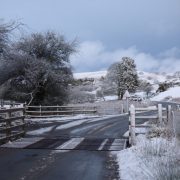Letter to Red Magazine Cont’d
My original e-mail to them can be found in this blog post. In short, I was writing about the lack of wildlife / conservation mentioned in their magazine plus the minimal amount of politics covered in the magazine (not online) around the time of the election.
Kudos to them, they actually responded to me:
Dear Megan, thank you for your email and for your considered thoughts on our editorial content.
You raise a couple of concerns. Firstly, the content of our Anti-Apathy portfolio. In championing a selection of spirited women, we were aiming to highlight the power of activism, whilst being aware that there were many other causes we could have covered. Nature being one of them. No doubt there are countless others. We are confident that our women presented a balanced and varied cross section of the inspiring causes out there. You also raise our political coverage. We have to take issue with you on this one!
Over the past 12 months we have interviewed MPs David Cameron, Ed Milliband, Nick Clegg, Yvette Cooper, Esther McVey, Sarah Champion, Chuka Umunna, Jo Swinson and many more. We have also launched the Red 1000 panel (in print and online), a brilliant group of 1000 Red readers, recruited to voice their opinions on the daily political issues facing women in Britain today.
If you’d come along to the Red 1000 hustings, you’d have seen Yvette Cooper, Nicky Morgan and Jo Swinson up on stage, discussing issues like the NHS, education and the economy. The event was livestreamed and reported on Redonline.
Incidentally, we live Tweeted throughout all the TV debates and during last night’s election results.Politically inactive? Absolutely not.
I hope this answers your comments – and thank you again for taking the time to get in touch with your feedback.
Best wishes,
Naturally I did the polite thing and replied:
Good morning,
Thank you ever so much for responding to my e-mail, I really do appreciate you taking the time to do so.
I completely agree, the women (and man) represented do cover a wide range of causes and as I said previously, it was so inspiring to hear their stories and their work.
I strongly believe that along with climate change, the decline of wildlife and nature is the biggest crisis people face over the coming decades. This means it will affect not only us but also our children and future generations. As with many crises, globally, women are more vulnerable than men to the effects.
However, in the UK and across the world there are powerful and inspiring stories of women working and coming together to challenge these problems and solve them.
I was wondering if you think a way to improve your coverage on this particular issue would be an article or feature on one or more topics related to nature and wildlife. If you agree, I’ve had some ideas and would be happy to send you through a more detailed pitch. (Because why not? And I do actually have some ideas that I think would make some brilliant articles)
Regarding political coverage, I have loved your interviews in the magazine, they were wonderful and I enjoyed reading them. I don’t at all believe that you are politically inactive – but I do believe more could have been done in print around the time of the elections. Perhaps your next issue will discuss the manifesto of the Conservatives or women in politics? I know I’ve seen these online, but that’s only because I went searching specifically. I am one of your readers that currently only engages with you through the print media and I know for certain that I’m not the only one.
Best wishes,
Ms Megan Shersby





































































































































































